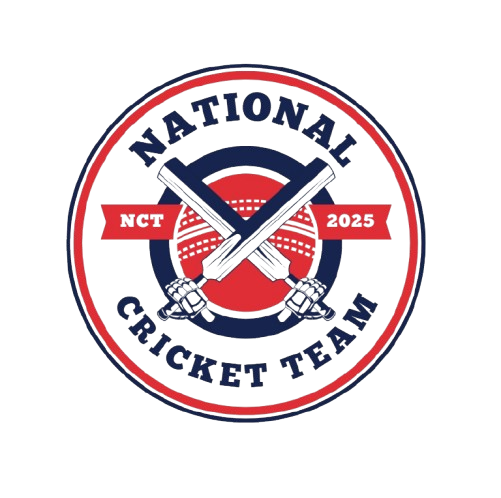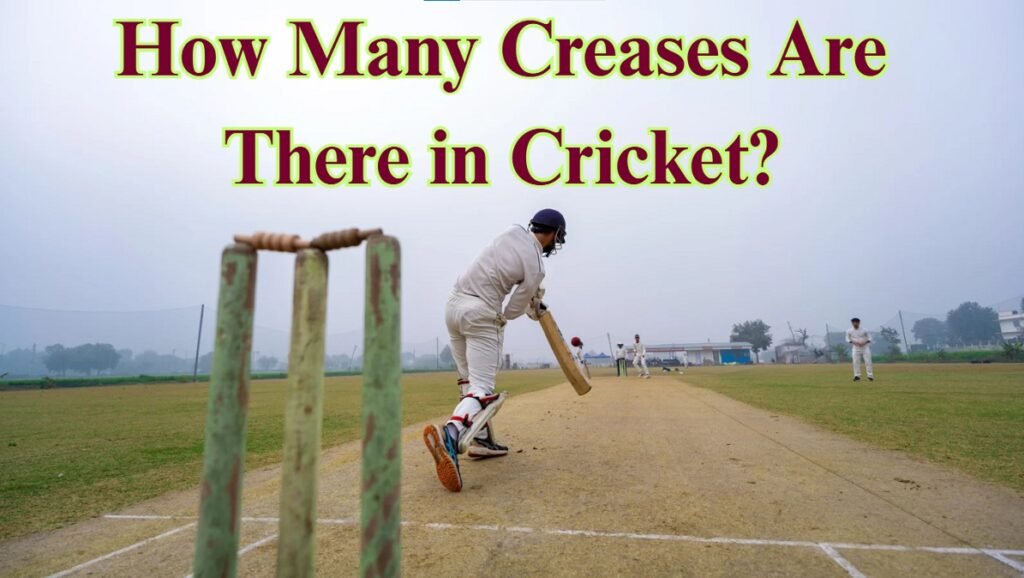Introduction
Cricket is one of the maximum loved sports activities within the world, celebrated for its particular blend of approach, competencies, and guidelines. While enthusiasts admire a batter’s instantly force or a bowler’s best Yorker, the crease is a essential detail that frequently goes disregarded. Creases on a cricket pitch may appear to be simple white strains, but they maintain gigantic significance in figuring out runs, wickets, dismissals, and fair play.
A not unusual question amongst beginners or even cricket fans is: How many creases are there in cricket?
The answer: There are 4 creases on a cricket pitch—the popping crease, bowling crease, go back crease, and the constrained region (used in restricted codecs). Each crease plays a critical role in making sure the game is conducted according to the regulations set by using the Marylebone Cricket Club (MCC) and the International Cricket Council (ICC).
Table of Contents
1. What is a Crease in Cricket?
In cricket, a crease is a line drawn on the pitch with white chalk or paint. These traces are not mere decorations—they outline playable regions, batting positions, bowling limits, and umpire decisions.
- Creases assist umpires judge whether or not a batter is secure or run out.
- Creases decide no-balls when bowlers overstep.
- Creases help in defining truthful and unfair deliveries.
In short, creases are the invisible guardians of cricket’s fairness.
2. How Many Creases Are There in Cricket?
There are 4 creases used in cricket:
- Popping Crease – Determines secure place for batters.
- Bowling Crease – The line bowlers must now not cross even as delivering the ball.
- Return Crease – Ensures bowlers supply within a criminal width.
- Restricted/Protected Area – A significant region that bowlers cannot damage.
3. Types of Creases in Cricket
Let’s cross into detail approximately every crease:
3.1 Popping Crease
- Located 4 feet in the front of the bowling crease.
- Extends across the width of the pitch.
- Determines if a batter is in or out of their ground.
- A batter need to preserve as a minimum a part of the bat or body at the back of this line to avoid being run out or stumped.
3.2 Bowling Crease
- The line in which stumps are rooted.
- Bowlers should release the ball earlier than stepping over it.
- If a bowler oversteps, it results in a no-ball.
3.3 Return Crease
- Two vertical traces drawn 4 ft 4 inches from the center stump on each facet.
- Ensures bowlers deliver the ball inside the felony width.
- If the bowler’s returned foot lands outside, it’s declared a no-ball.
3.4 Restricted/Protected Area
- A square region inside the middle of the pitch.
- Bowlers can’t again and again step into this sector after handing over the ball.
- Helps shield the pitch from damage.
4. History of Creases in Cricket
- 18th Century: Early cricket used pegs rather than lines.
- 1744 Laws of Cricket: First advent of creases in legal guidelines.
- 1774: Popping crease officially introduced.
- nineteenth Century: Return creases delivered to control bowlers.
- 20th Century onwards: Protected region added to shield pitches in longer suits.
5. Standard Measurements of Creases
| Crease Type | Distance/Measurement | Purpose |
|---|---|---|
| Popping Crease | 4 feet in front of bowling crease | Safe zone for batters |
| Bowling Crease | 8 feet 8 inches long | Bowling legality check |
| Return Crease | 4 feet 4 inches from stumps (each side) | Ensures bowler stays within legal delivery area |
| Protected Area | Central 5 feet strip | Prevents damage to pitch |
6. Importance of Creases for Batters
- Helps in keeping off run-outs and stumpings.
- Provides the line of protection during running between wickets.
- Crucial for judging quick singles.
7. Importance of Creases for Bowlers
- Defines criminal delivery positions.
- Prevents bowlers from gaining unfair advantage.
- Controls overstepping and huge bowling.
8. Creases and Fielding Restrictions
- In restricted-overs cricket, additional creases are drawn to mark Powerplay restrictions.
- These include inner circles (30-backyard circle) but technically, they may be no longer counted as creases.
9. Creases in Limited Overs Cricket (ODI & T20)
- Extra suggestions help define fielding positions.
- Technology like DRS and Hawk-Eye rely closely on crease markings.
10. Common Dismissals Involving Creases
- Run Out – Batter fails to floor bat behind popping crease.
- Stumped – Wicketkeeper eliminates bails while batter is out of crease.
- No-Ball – Bowler’s front foot crosses bowling crease.
- Hit Wicket – Batter disturbs stumps near bowling crease.
11. Key Rules Associated with Each Crease
- Popping Crease → Determines protection of batter.
- Bowling Crease → Legal bowling delivery take a look at.
- Return Crease → Restricts bowler’s lower back foot.
- Protected Area → Prevents repeated footmarks by using bowlers.
12. Misconceptions About Creases
- Many accept as true with there are only creases (popping & bowling).
- In fact, there are 4 creases, each with particular policies.
13. FAQs on Creases in Cricket
Q1. How many creases are on a cricket pitch?
Ans: There are 4 creases—popping, bowling, go back, and limited/protected vicinity.
Q2. Which crease is maximum critical for batters?
Ans: The popping crease determines their safety.
Q3. What takes place if a bowler steps outside the return crease?
Ans: It is declared a no-ball.
Q4. Who maintains creases?
Ans: Ground body of workers and umpires make certain creases are marked well.
14. Final Thoughts
The idea of creases in cricket might also look easy, however they’re the muse of the sport’s equity. Without creases, rules like run out, stumping, or no-ball might lose clarity.
To summarize:
- There are four creases in cricket.
- Each crease—popping, bowling, go back, and restrained vicinity—has a completely unique cause.
- Creases are essential for batting, bowling, and umpiring selections.
Whether you are a amateur or a seasoned cricket fan, expertise creases deepens your love for the game and facilitates you respect the finer information of the sport.



